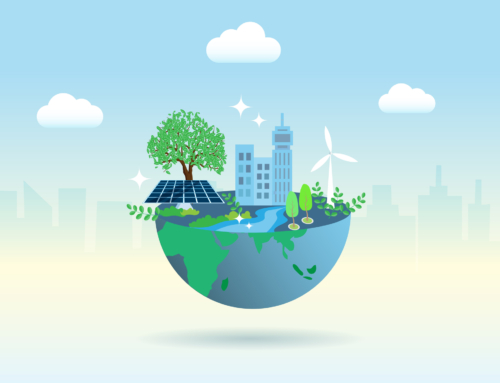In today’s world, there are many reasons to search for alternative sources of energy. Environmental concerns, high oil prices, and dependency on foreign oil has many looking into the renewable energy of biofuel. Several countries, including the U.S., already use the biofuels of ethanol and biodiesel, but many are looking at the potential of something many of us just wrinkle our nose at when we see it on top of ponds or standing bodies of water: algae.
What Is Biofuel?
Biofuel is fuel derived from biological material that was recently living, such as trees, agricultural wastes, grass, or crops. This material is also called biomass, which is simply an organic matter that can be converted to fuel and is regarded as a potential energy source. Biofuel can be solid, liquid, or gas, and is a substitute for traditional fossil fuels like petroleum, natural gas, propane, and coal.
As an alternative to fossil fuels, biofuels can reduce greenhouse gas emissions and increase energy security. They are growing in global use, with industries expanding in North and South America, Europe, and Asia.
Using Algae as Biofuel
As we look for alternative energy sources, some researchers have turned to algae. Algae are single-celled organisms that grow in water and are one of the most efficient producers of plant oils. Certain types of algae contain natural oils that can be distilled into a number of petroleum-like products that could act as replacements for gasoline, diesel, and jet fuel.
Using algae for fuel was first explored in the 1970s. The surge in recent interest for renewable, domestically-produced fuels has arisen from worries that the future demand for fuels will outstrip the supply, and that we need to find low-carbon alternatives to petroleum fuels to address the buildup of greenhouse gases, and national security concerns that strongly encourage finding domestic, renewable, and sustainable energy sources.
There are economic and environmental advantages of using algae as biofuel, but there are some disadvantages as well. If we are going to have any sort of mass adoption and use of algae biofuel, it’s important to understand both the pros and cons.
Pros of Algae Biofuel
A Renewable Resource
Unlike fossil fuels, algae are completely renewable. When we want a greater supply, all we need to do is grow more. In fact, some species of algae can double their number in 24 hours. A Water Resources study in 2011 found that algae biomass could replace roughly 48% of the petroleum products that the U.S. imports (using 2011 numbers).
Carbon Dioxide Neutral
Because algae use carbon dioxide through photosynthesis, algae biofuel is carbon neutral. The CO2 produced by burning the fuel is the same amount of CO2 that the algae took to grow and produce the fuel. This means that the net CO2 emission is zero, the same as if the algae had never been grown. Algae biofuel could provide a renewable fuel source that doesn’t have a negative impact on our environment.
Extremely Productive
Compared to other sources of biofuels, algae can produce much more oil per acre—10 to 300 times more. These other biofuel resources aren’t as close to being carbon dioxide neutral either. And unlike some other biofuel sources like corn or soybean, algae is not a primary food source for humans or livestock.
Environmentally-Friendly
Algae can be grown in numerous locations, including wastewater or water around power plants or factories. It can grow in any climate, as long as there is enough sunlight, meaning that it can be grown in areas that are inefficient for other agriculture. Algae biofuel is also virtually harmless to the environment. If a spill occurs, we don’t need to worry about significant or long-lasting adverse effects on the ecosystem.
Produces Numerous Byproducts
We can use hydrocarbons from algae biomass in the same way we use them for petroleum-based items to make things like fertilizers, soap products, industrial cleaners, or feedstocks. Algae can not only produce biofuel but other useful products as well.
Versatile Fuel Source
Algae biofuel can be refined in a similar way to petroleum products, which means it could become a direct replacement for fuels we already use. The fuel can be used in cars, machines, other types of vehicles, jets, and even as oil for cooking.
Cons of Algae Biofuel

Not Enough Information
While interest and research into algae biofuel have been growing, information is still limited. Dozens of groups and companies are researching and testing ways and technologies to produce algae biofuel, but a 2009 report by the Natural Resources Defense Council expressed the concern that “In the face of this sprawling, dynamic industry, it is hard to develop a clear picture of the environmental pros and cons of a full system to grow algae and turn it into fuels.”
Furthermore, more testing needs to be done on how algae biofuel actually performs when used in cars, machinery, airplanes, etc.
Large Water Demand
Algae require a significant water source available to maximize growth. Temperature levels for the best growth cause water to evaporate, so algae biofuel uses much more water than other resources. This means that agricultural water resources may have to be diverted and used.
High Fertilizer Use
Massive quantities of algae can only be grown with the use of fertilizer—a lot of it. To meet the needs of just 5% of the U.S. transportation market, 15% of all the fertilizer produced in a year would be required. With this fertilizer use would come the problems already associated with it in agriculture: run-off may pollute water sources, creating algae blooms that can kill wildlife. Also, fertilizer production requires energy and produces carbon dioxide, thus affecting the carbon dioxide neutral status of algae biofuel when considering the whole process.
Expensive to Produce
The costs of producing algae biofuel is still much higher than equivalent fossil fuels. In 2009, algae biofuel startup Solix produced biofuel from algae, but it cost almost $33 a gallon. By adjusting for certain factors and selling byproducts for pet food, the price could be brought down to $3.50/gallon, but that’s still equivalent to $150 a barrel of oil. Technology is still developing with the hope of being able to bring costs down.
Complicated Process
There are several steps to take algae from a natural product to a usable fuel source. This process is complicated and takes time. First, algae must be grown in natural conditions, but that are also controlled to create an environment conducive for maximum growth. Open ponds, for example, would require temperature control in some way. Carbon dioxide might also have to be pumped into ponds.
Second, oil must be extracted through an oil press, solvents, or supercritical fluids. Finally, the extracted oil needs to be refined. With current processes, we can produce petroleum fuels faster.
Quality Issues
There are thousands of species of algae, but not all of them produce the same amount of oil. Although creating biofuel from the different crops uses the same techniques, the quality can vary widely. In order to normalize the quality of algae biofuel, standardized requirements would need to be determined, such as species cultivated, processes and technologies used, etc.
Is Algae the Answer?
Algae-based biofuel is a promising energy source, but we are still far from being able to replace significant amounts of current, non-renewable energy resources with it. The good news is that there are several research projects looking into improving the process to make it a more viable option. And maybe in the future, you’ll be using algae to power your car.
Until then, there are ways that you can help support new developments in energy innovation. Contact Spring Power and Gas to find out how you can contribute to a cleaner environment now. We offer services in Maryland, New Jersey, and Pennsylvania.




![Top 11 Sustainable Building Practices for Eco-Homes [Plus 5 Sustainable Materials]](https://springpowerandgas.us/wp-content/uploads/2023/02/iStock-181062267-500x383.jpg)

